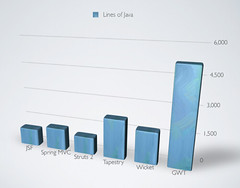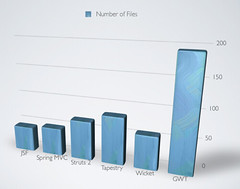How do you choose web framework candidates to compare?
David Díaz Clavijo sent me an email a couple weeks ago asking me about comparing web frameworks. David is a computer engineering student at the University of Las Palmas de Gran Canaria (ULPGC) in the Canary Islands, Spain. His FYP (Final Year Project) is a web frameworks comparison focused on high productivity frameworks. He's started a blog to help facilitate his work and has been writing some interesting posts.
Four frameworks will be compared. The comparison test is composed by four fixed time tasks for each framework:
- Learning the programming language: 5 hours
- Making exercises in the programming language: 15 hours
- Learning the framework: 25 hours
- Developing the website: 50 hours
After all process is done, it can be seen which framework presented a higher productivity and smaller learning curve.
We have decided a cross-language set of frameworks which are: Ruby on Rails, Grails, Django and Code Igniter.
Today, he wrote about the web frameworks he's decided to compare and inspired me to respond to his original request for my thoughts.
Hello David,
Sorry it took me so long to respond. I think your approach as far as learning the language, making exercises, learning the framework and developing the website is good. As you know, the last one you develop with will likely do well because you're repeated the steps so much with the other ones.
However, there's one thing I think you're doing wrong. In the real world, I don't believe that an architect would look at *all* the available web frameworks and choose one. I believe most of them already have a language bias or there's a target platform (e.g. LAMP, JVM, etc.).
I believe the majority of development happens today where a platform is already in place. Even moreso, the backend may already be in place and the company is simply trying to find a more productive front-end framework. In the first instance, where the platform is already chosen, the chooser's options are immediately limited. For example, if it's the JVM, Django might be eliminated because JPython isn't that up-to-snuff or widely used (this could be changing). However, it could be said that all the frameworks you've chosen (including Code Igniter) can run on the JVM.
I just don't see people identifying web frameworks across such a wide variety of languages. I think folks generally choose a platform, then a language, then a framework. It's possible that startups will do it differently by choosing a language first. However, I imagine most startups have a technical founder that already has some preference towards a particular language.
Now it's your turn, dear readers. Have you ever been in a situation where you've been able to pick a web framework across all languages? Did any of your biases enter into the equation?
How would you recommend David go about choosing web framework candidates?





























